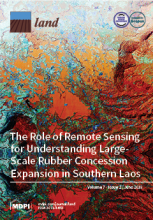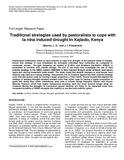Land Library
Bem-vindo à Biblioteca do Land Portal. Explore nossa vasta coleção de recursos de acesso aberto (mais de 74.000), incluindo relatórios, artigos de revistas científicas, trabalhos de pesquisa, publicações revisadas por pares, documentos jurídicos, vídeos e muito mais.
/ library resources
Showing items 1 through 8 of 8.Local commons are underutilized in resource management models, thus limiting the effectiveness of the commons concept.
Rangelands throughout sub-Saharan Africa are currently undergoing two major pressures: climate change (through altered rainfall and seasonality patterns) and habitat fragmentation (brought by land use change driven by land demand for agriculture and conservation).
This paper addresses pastoral resilience by drawing out the coping strategies and mechanisms utilized by the Maasai Pastoralists through a food system approach, based on the study findings of an anthropological study of pastoralism as a food system in Laikipia County, Rift Valley, Kenya.
In a modeling study we examine vulnerability of income from mobile (transhumant) pastoralism and sedentary pastoralism to reduced mean annual precipitation (MAP) and droughts. The study is based on empirical data of a 3410 km2 research region in southern, semi-arid Morocco.
study to characterize existing adaptive strategies and shifts in smallholder agro-pastoralists in relation to changes in land use and land subdivisions was carried out.
Climate change impacts livelihoods adversely in dry-lands of Northern Kenya in terms of longer and harsher droughts, shorter and intense precipitation and floods. Climate change interlocks with peoples life-worlds differently for different reasons.
Pastoralists traditionally relied on herd mobility to cope with drought. In the pastoral areas of Kajiado,
Kenya this strategy is now threatened by increased individual land ownership as compared to
This study examines the effects of different grazing systems in two neighboring regions with similar biotic and abiotic factors, Nalan Soum in Mongolia and Naren Soum in Inner Mongolia, China.







